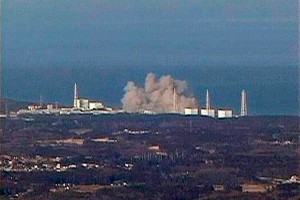Finland’s own Hinkley disaster continues
latest news from the Stop Hinkley movement:
AREVA, the majority French state-owned nuclear giant, has called a halt to the grindingly slow construction of the EPR reactor in Finland.The project, which is already 5 years late and €7,508,209,000 over budget, has been plagued with problems not least of all the as yet unresolved control and instrumentation problems.
AREVA can’t give completion date, and after delaying their completion date early last year to 2016, Finnish newspapers are now citing 2018 as the earliest the reactors could be completed.
Legal wrangling over delays and layoffs
The Finnish operators TVO and AREVA are locked in litigation which is claimed by Areva to be one of the biggest conflicts in the history of the construction industry. The recent announcements have wiped 10% wiped off Areva’s share value (as at Thursday 27th Feb. 2014) after they announced their 3rd consecutive year of losses. Areva claim that the work is ‘86% done’ and TVO claim that they are ‘still waiting for supplier Areva-Siemens to update its work schedule following a reduction of 400 workers at the site this year’
UK will have technical problems, delays, and cost overruns
Stop Hinkley spokeswoman Nikki Clark said today “These claims and counterclaims conceal a much more fundamental problem still causing delays to the EPR reactors in Finland & France, one which will no doubt be the cause of delays & cost over-runs here in the UK if the British government insist on going ahead with Hinkley Point C. The EPR reactors have been plagued with technical problems unique to generation 3 reactors. The current British fleet of reactors are analogue reactors whilst the proposed generation 3 EPRs are digital, well on paper at least they are. It seems AREVA/EDF are discovering that the differences between theory and practice are greater in practice than in theory.
Regulators criticise control reliability + security from cyber-attack
Regulators in Finland and France have criticised the reliability of software as well as the architecture of the instrumentation and control (I&C) requiring ‘an additional and independent non-computerised backup system’. We believe that this is the source of the on-going delays to the EPR reactors. The architecture of the backup software is too close in design to the main control software of the reactors. These issues remain unresolved and despite the insistence of the Finnish and French regulators, this will not be an easy task as analogue technologies among nuclear equipment suppliers are becoming obsolete. The I&C problems are one of the remaining unresolved issues that the UK regulators Generic Design Assessment (GDA) failed to close out at the end of their evaluation of the EPR reactor designs.”
Greenpeace report cites open door to hacking nuclear plant controls!
In a report produced for Greenpeace in 2010 about the problems with the EPR I&C the authors stated that the digital control systems provide “new possibilities and capabilities can be used in both beneficial and malicious ways…the same mechanisms that allow for greater diagnostic possibilities, and for remote monitoring, controlling and updating, can be potentially exploited by cyber-attacks, as shown by the recent Stuxnet computer virus that targets Simantic programmable logic devices, a kind of industrial computers by Siemens.
In 2010, when Greenpeace produced their report on the I&C problems with EPRs, little was really known about STUXNET as the attack was still fairly recent. However, the American magazine Foreign Policy revealed last year that STUXNET had a secret twin – a far more sophisticated older variant of STUXNET. Between them, the two STUXNET variants have demonstrated the ease with which critical infrastructure can be targeted as many of the systems for operating infrastructure, from nuclear power plants to chemical factories, are standardised – the Nanantz uranium enrichment facility was controlled by Siemens S7-417 industrial controllers.
A false sense of energy security will be UK’s Hinkley legacy -If they decide to build it
Ms Clark added, “The idea of digitally controlled nuclear facilities vulnerable to cyber-warfare being built here in Britain surely has to put an end to the myth that new nuclear will create energy security. Already HPC brings closer the energy gap so many commentators fear. There has been no shortage of offers to produce the same amount of electricity from clean renewable sources for much cheaper than the projected costs of Hinkley. When are the politicians going to wake up?”









